The 2021 San Francisco Climate Action Plan (the Plan) charts a pathway to achieve net zero greenhouse gas (GHG) emissions and works toward addressing racial and social equity, public health, economic recovery, resilience, and providing safe and affordable housing to all.
View climate-related plans and reports from San Francisco City and County.
Climate Reports
Energy Reports
Transportation Reports
Zero Waste Reports
Urban Forest and Greening Reports
Municipal Reports
Climate Reports
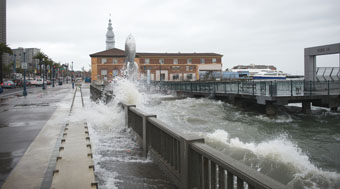
2021 San Francisco Climate Action Plan
The 2021 San Francisco Climate Action Plan (the Plan) charts a pathway to achieve net zero greenhouse gas emissions and works toward addressing racial and social equity, public health, economic recovery, resilience, and providing safe and affordable housing to all.
2020 Sector-Based GHG Emissions Inventory At-A-Glance
The 2020 Geographic Greenhouse Gas Emissions Inventory provides insight on San Francisco's greenhouse gas levels from 1990-2019. In 2020, San Francisco successfully reduced emissions 48% below 1990 levels to 4.08 million mtCO2e. Emission reductions were achieved even though San Francisco’s population increased 21% during the same time period.
1990-2015 Consumption-Based Greenhouse Gas Inventory Update
In partnership with Cool Climate Network, this report is a methodological update to the City’s first consumption-based emissions inventory (CBEI) released in 2011. Researchers found that despite San Francisco’s progress towards reducing its geographic emissions 26% between 1990-2015, its total and per household consumption-based emissions only fell by 2% and 17%, respectively. Conducting an inventory through the lens of a CBEI is meant to surface opportunities for San Franciscans and businesses to expand their emission reduction commitments by producing and consuming their food, goods, and services sustainably.
Sea Level Rise Vulnerability and Consequences Assessment
The Sea Level Rise Vulnerability and Consequences Assessment describes the vulnerability of public buildings and infrastructure to sea level rise and coastal flooding and the consequences on people, the economy, and the environment. It includes a series of illustrative neighborhood profiles that describe how neighborhoods would be impacted by sea level rise and coastal flooding over time, with a focus on vulnerable communities.
2018 Geographic GHG Emissions Inventory at a Glance
The 2018 Geographic Greenhouse Gas Emissions Inventory provides insight on San Francisco's greenhouse gas (GHG) levels from 1990-2018. In 2018, San Francisco successfully reduced emissions 35% below 1990 levels to 5.14 million mtCO2e. Emission reductions were achieved even though San Francisco’s population increased 22% during the same time period.
San Francisco Antibiotic Use in Food Animals Ordinance Report
In 2017, the City and County of San Francisco passed the landmark Antibiotic Use in Food Animals Ordinance to address antibiotic resistance. The San Francisco Antibiotic use in Food Animals Ordinance Report showcases the antibiotic policy and use data for a variety of meat and poultry products sold locally and identifies challenges in the data reporting process to be worked on.
San Francisco’s Hazards and Climate Resilience Plan
The Hazards and Climate Resilience Plan serves as a blueprint for San Francisco businesses and residents to better understand and address the impacts of natural disasters facing the city. It identifies the climate-related hazards, risks, and consequences and proposes over 90 strategies to mitigate the impacts.
San Francisco Biodiversity Policy: Implementation and Next Steps Report
The San Francisco Biodiversity Policy aims to promote local biodiversity and integrate healthy native wildlife and plant habitats thought the city’s physical environment. This report outlines how the Department of the Environment, the Planning Department, and other key partners plan to implement the policy, where opportunities and challenges lie, and what next steps exist for the Interagency Biodiversity Working Group.
2017 Geographic GHG Emissions Inventory at a Glance
The 2017 Geographic Greenhouse Gas Emissions Inventory provides insight on San Francisco's greenhouse gas (GHG) levels from 1990-2017. In 2017, San Francisco successfully reduced emissions 36% below 1990 levels to 5.1 million mtCO2e. Emission reductions were achieved even though San Francisco’s population increased 22% during the same time period.
Focus 2030: A Pathway to Net Zero Emissions for San Francisco
Per San Francisco Board of Supervisors Resolution, Declaring a Climate Emergency in San Francisco (March 18, 2019, PDF), San Francisco Department of Environment was tasked, in collaboration with the Mayor's office and partner City agencies, with developing and delivering a technical report that details a path for achieving deep emissions reductions by 2030. Focus 2030: A Pathway to Net Zero Emissions (July 2019) quantifies the potential emissions reductions of the City’s 0-80-100-Roots goals based on a technical analysis of where emissions come from and the speed at which strategic priority actions are taken. The findings of this report will serve as a starting point for San Francisco’s 2020 Climate Action Strategy update.
San Francisco Municipal Progress Report: Climate and Sustainability
The Municipal Progress Report on Climate and Sustainability (November 2018) provides a summary of the City’s municipal emissions with a breakdown by department. It also presents an overview of the actions City departments are taking around zero waste, sustainable trips, green building, biodiversity and urban forestry, and green purchasing.(report coming soon).
2016 Geographic GHG Emissions Inventory at a Glance
The 2016 Geographic Greenhouse Gas Emissions Inventory provides insight on San Francisco's greenhouse gas (GHG) levels from 1990-2016. In 2016, San Francisco successfully reduced emissions 30% below 1990 levels from 6.2 million to 5.6 million mtCO2e. Emission reductions were achieved even though San Francisco’s population increased 20% during the same time period.
Reaching 80-50: Technology Pathways to a Sustainable Future
Reaching 80-50: Technology Pathways to a Sustainable Future (2016) reviews technology pathways for achieving San Francisco’s climate action targets (reducing CO2eq emissions 80% by 2050 against a 1990 baseline) within the context of the local 0-50-100-Roots framework, as well as the State of California’s policy leadership.
Resilient San Francisco
Resilient San Francisco (2016) outlines pressing challenges and how City government can partner with the community to make bold and lasting progress on these challenges
San Francisco Municipal Decarbonization Report 2016
The San Francisco Municipal Decarbonization Report describes a first stage assessment to identify the potential costs, benefits, and feasibility of transitioning San Francisco’s municipal building stock to low emission space and water heating systems (collectively “building heating”).
Climate and Health: Understanding the Risk: An Assessment of San Francisco's Vulnerability to Flooding and Extreme Storms
Climate and Health: Understanding the Risk: An Assessment of San Francisco's Vulnerability to Flooding and Extreme Storms (2016) is an assessment designed to prepare the San Francisco Department of Public Health and the City for both the direct and indirect health impacts of flood inundation.
The Sea Level Rise Action Plan
The Sea Level Rise Action Plan (2016) is a call to action for City departments and stakeholders to work together to make San Francisco a more resilient city in the face of rising sea levels. The Plan, led by San Francisco Planning and San Francisco Public Works, defines an overarching vision and set of objectives for future sea level rise and coastal flooding planning and mitigation in San Francisco.
Urban Water Management Plan
As water supplies become more vulnerable due to drought and the effects of climate change, it is critical that we diversify our water supplies to add more local sources into our water portfolio. Urban Water Management Plan (2015) presents the latest information on the San Francisco Public Utility Commission's service areas, Hetch Hetchy Regional Water System and other water systems operated by the SFPUC, system supplies and demands, water supply reliability, Water Conservation Act of 2009 compliance, water shortage contingency planning, and demand management.
San Francisco Climate and Health Profile
San Francisco Climate and Health Profile links climate change projections with their associated health outcomes, and identifies populations and locations most vulnerable to these health outcomes. The goal of the Climate and Health Profile is to support local public health climate adaptation efforts, and advance urban health and environmental justice in the climate and health field.
San Francisco's Climate and Health Adaptation Framework 2017
This Climate and Health Adaptation Framework is a compendium of the Climate and Health Program’s work over the last several years, and represents a starting point to engage San Francisco’s diverse City and community stakeholders on designing solutions that reduce health disparities and climate health impacts. The Climate and Health Adaptation Framework does not represent a final plan, but rather a tool to begin conversations about how best to adapt to the health impacts of climate change. San Francisco Department of Public Health, 2017.
Guidance for Incorporating Sea Level Rise into Capital Planning
Guidance for Incorporating Sea Level Rise into Capital Planning in San Francisco: Assessing Vulnerability and Risk to Support Adaptation presents a framework for considering sea level rise within the capital planning process for the City and County of San Francisco (CCSF). Prepared by the City and County of San Francisco Sea Level Rise Committee for the San Francisco Capital Planning Committee, Adopted by the Capital Planning Committee September 22, 2014.
San Francisco's Climate Action Strategy
San Francisco Climate Action Strategy 2013 Update outlines the city's progress in reducing greenhouse gas emissions, and how we as a community can continue to move towards our climate goals. In addition to the 2013 Update, the city has a companion website with the City's formula for reaching its climate goals. San Francisco Climate Action: 0 50 100 provides an overview of policies and programs to reach zero waste, 50% sustainable transportation, and 100% renewable energy. San Francisco Department of the Environment, 2013 and 2015.
San Francisco Environment Code Greenhouse Gas Emissions Limit
San Francisco Environment Code Greenhouse Gas Emissions Limit (Section 902) defines targets for greenhouse gas emissions for the years 2008, 2017, 2025, and 2050. The City's greenhouse gas reduction goals use 1990 levels as a baseline.
Climate Change Impacts, Vulnerabilities, and Adaptation
Anticipated impacts are taken from the Climate Change Impacts, Vulnerabilities, and Adaptation in the San Francisco Bay Area: A Synthesis of PIER Program Reports and Other Relevant Research. California Energy Commission Public Interest Energy Research report. Ekstrom, Julia A., and Susanne C. Moser, 2012.
The report synthesizes San Francisco Bay Area-focused findings from research conducted in 2010–2012 as part of the state’s Vulnerability and Adaptation study sponsored by the California Energy Commission’s Public Interest Energy Research (PIER) Program.
The Carbon We Consume
The Carbon We Consume booklet was produced by the San Francisco Department of Environment on behalf of Green Cities California's consumption campaign. Taking data from the California Consumption Based Emissions Inventory, it illustrates the reality of our large carbon footprint from the goods and services we consume.
Sea Level Rise Analysis
A sea level rise report conducted by the Port of San Francisco was used as reference to damage to Port properties. Prepared for the Port of San Francisco by URS, 2011. Available upon request to the Port of San Francisco.
State of California's Climate Change Legislation
View California's Climate Change Legislation.
Kyoto Protocol
The United Nations Framework Convention on Climate Change was the first large scale effort at addressing climate change. It gave birth to the Kyoto Protocol which set greenhouse gas emission reduction goals.
Methane Math: How Cities Can Rethink Emissions from Natural Gas
Methane Math: How Cities Can Rethink Emissions from Natural Gas presents evidence that the short-term global warming potential of methane coupled with higher than previously estimated natural gas leak rates means that sunny assumptions about coal-to-gas switching should not serve as the basis for climate policy. The report provides ten priority actions local governments can take to better account for the impact of natural gas while accelerating the transition to 100% renewable energy.
Energy Reports
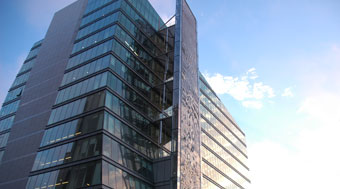
Electricity Resources Plan
This Climate Action Strategy goal of 100% renewable energy by 2030 is taken from the Electricity Reources Plan, and the Mayor's 100% renewable energy goal. The plan reinforces the Board of Supervisors goal of delivering 100% carbon free electricity to all San Franciscans.
The San Francisco 2011 Updated Electricity Resources Plan. San Francisco Public Utilities Commission.
Renewable Energy Recommendations
Energy efficiency strategies and pathways to achieving 100% renewable energy within the next 10 years are taken from the Mayor's Renewable Energy Task Force Recommendations Report.
San Francisco Mayor’s Renewable Energy Task Force Recommendations Report. San Francisco Department of the Environment, 2012. With sponsorship from the Sidney E. Frank Foundation.
Existing Commercial Buildings
Estimates for efficiency gains in commercial building of buildings 50% by 2030, or an average net reduction of 2.5% per year were taken from the Mayors Taskforce Report on Existing Buildings.
San Francisco Mayors Taskforce on Existing Commercial Buildings. San Francisco Department of the Environment, 2009.
Green Building Recommendations
Green building codes and recommendations on now implemented LEED standards for new buildings are taken from the Mayors Taskforce Report on Green Building.
The Mayors Taskforce on Green Building for the City and County of San Francisco Report and Recommendations. San Francisco Department of the Environment. 2007.
Long Term Energy Efficiency
The California Long Term Energy Efficiency Plan was used for reference to Net Zero Energy Building goals for new (and some existing) residential buildings by 2020 and commercial buildings by 2030.
California Long Term Energy Efficiency Strategic Plan (CEESP). California Public Utilities Commission.
Natural Gas Leakage
This report is an early step in studying the potentially significant global warming effect of natural gas leakage in San Francisco.
Natural Gas Leakage in San Francisco: A Climate Perspective. San Francisco Department of the Environment, 2013.
Transportation Reports
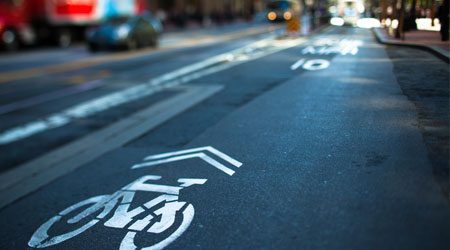
Vision Zero
The Vision Zero SF Two-Year Action Strategy outlines the projects and policy changes the City plans to pursue in the next two years to build safety and livability into city streets. The Action Strategy encompasses a range of solutions to address street safety comprehensively and citywide that will bring us closer to achieving the Vision Zero goal of zero deaths on City streets by 2024.
SFMTA Climate Action Strategy
The San Francisco Municipal Transportation Agency (SFMTA) Climate Action Strategy (CAS) was published in 2011. All VMT reduction goals and GHG calculations for all demand management, congestion pricing Muni strategies were developed in concert with and taken from the SFMTA Sustainable Streets Division with support from the San Francisco County Transportation Authority.
Better Streets Plan
Better Streets Plan, published in 2010, includes goals surrounding making streets safer and more beautiful for pedestrians.
Transportation Sustainability Program
The Transportation Sustainability Program (TSP) seeks to improve and expand upon San Francisco’s transportation system to help accommodate new growth. Smart planning and investment will help us arrive safer and more comfortably at our destinations now and in the future.
The Transportation Demand Management (TDM) Program is designed to work with developers to provide more on-site amenities that will encourage smarter travel options so people can get around more easily without a car. These choices are better for the environment, help manage congestion, help to reduce risks to pedestrians and cyclists, and improve the overall efficiency of our transportation network
San Francisco Bike Plan
Goals on bicycle infrastructure, safety and accessibility are taken from the San Francisco Bike Plan, a subset to the SFMTA’s Transit First policy as well as the City’s 2004 Climate Action Plan.
San Francisco Bike Plan was published in 2012 by the San Francisco Municipal Transportation Agency.
Zero Waste Reports
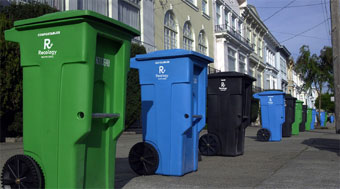
San Francisco Waste Characterization Study
The 2006 Waste Characterization Study identifies the major constituents in the municipal waste stream. This data coupled with information compiled by Recology and the Department of the Environment's Zero Waste Team informed the 2010 community-wide greenhouse gas emission inventory.
Consumption-Based Emissions Inventory
San Francisco, with Green Cities California, published one of the first consumption-based greenhouse gas inventories in the nation. Unlike the traditional GHG emissions inventory which only accounts for carbon emissions associated with energy use in buildings and fuel burned in local vehicles, the Consumption-Based Emissions Inventory for San Francisco looks at carbon impacts of the full lifecycle of goods and services.
Urban Forest Reports and Greening
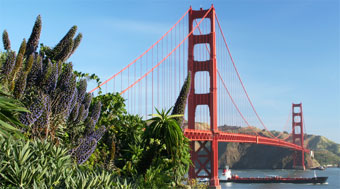
Urban Forest Report
Recommendations on future actions to care for and increase the size of San Francisco’s Urban Forest are taken from the San Francisco Urban Forest Council Annual Reports.
San Francisco Urban Forest 2015 Annual Report. Department of Environment.
Urban Forest Effects and Values
San Francisco Urban Forest: Assessing Urban Forest Effects and Values (2007) is an analysis of the urban forest and its carbon sequestration values are taken from a USDA Forest Service Report and used the UFORE Urban Forest Effects Model. It assesses urban forest effects and values of San Francisco’s urban forest.
Blue Greenway Guidebook
The Blue Greenway Guidebook is a restoration and revegetation guide is based on the Blue Greenway Planning and Design Guidelines, developed by the Port of San Francisco (Port) in 2011.1 The focus of this guide is on the restoration and revegetation of contaminated and impacted lands along the Blue Greenway.
Municipal Reports
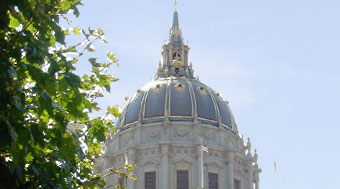
San Francisco Department of the Environment Annual Report
San Francisco Department of the Environment's Annual Report outlines the department's accomplishments, including the city's success in reducing greenhouse gas emissions by 14.5% below 1990 levels (2014 Annual Report).
San Francisco City Department Climate Action Plans
Department Climate Action Plans include each agency's carbon footprint and highlights innovation in sustainable business practices along with other internal sustainability mandates such as zero waste, green purchasing, and alternative transportation. San Francisco was one of the first U.S. cities to ask individual city departments to produce climate action plans. In 2008, the Board of Supervisors approved an ordinance requiring each department to produce and update a Climate Action plan annually.